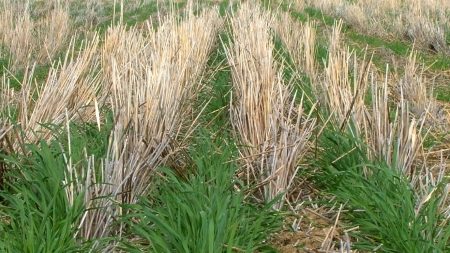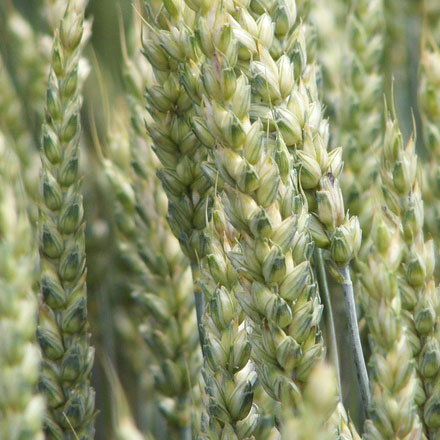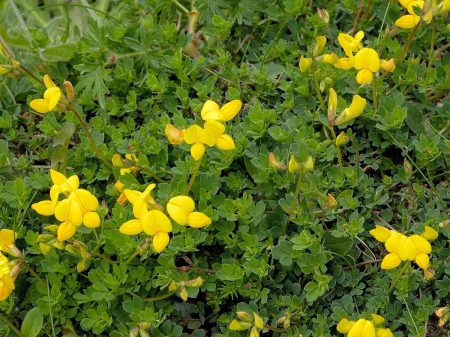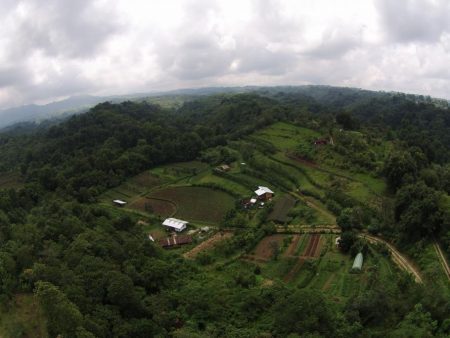November 19, 2016 – Who would have thought that if a farmer planted more trees on cropland that the end result would be enhancing our fight against climate change. Or that by new methods of tillage more carbon could be sequestered in soil. Or that by not draining ponds and low wetlands on farm property, the net benefit would be reduced atmospheric carbon, or that by retaining natural grasslands in and around farms we would not only trap carbon but also reduce insect infestations? The common theme to all of these insights is a growing awareness of the importance of carbon farming and its role in the land carbon sink.

What is carbon farming?
We know the ocean absorbs carbon dioxide from the atmosphere. But so does land and it does it through the plants that take root on it, and through the soils that trap and sequester the carbon in root systems and the organic material that remains after harvest and in the cycling of the seasons. In the United States alone 762 million tons of carbon dioxide (CO2) is stored in plants and soil offsetting 11% of the country’s carbon emissions.
Agriculture research is no longer just about crop varieties and growing yields. It is now front and centre focused on helping the planet to stay cooler through better carbon farming practices. The areas where new research is yielding results include:
- no-till practices,
- cover cropping,
- crop rotation,
- planting of cereal perennial crops rather than annuals,
- changing what is grown on grazing lands,
- integrating trees.
The current administration of the United States Department of Agriculture set out a road map for climate smart practices in May of this year. In it implementation plans were laid out based on 10 building blocks:
- Soil Health
- Nitrogen Stewardship
- Livestock Partnerships
- Conservation of Sensitive Lands
- Grazing and Pasture Lands
- Private Forest Growth and Retention
- Stewardship of Federal Forests
- Promotion of Wood Products
- Urban Forests
- Energy Generation and Efficiency
The goal of the road map was to achieve carbon sequestration amounting to 120 million tons of CO2 or equivalent annually by 2025, equal to the emissions produced by 25 million cars or 11 million homes. With the new administration it is not known whether this road map will endure the scrutiny of the new President and his appointees.
Nonetheless agriculture and farmers are on the front lines of climate change and will be first victims of global warming’s many tipping points including increased frequency in extremes of heat or cold, prolonged droughts, and episodic floods. So whether the government of the day is proactive or in denial, the vital business of agriculture must go on.
A quick review of the practices described above are, therefore, in order.
No Till, Cover Cropping and Crop Rotation

These best practices all work hand-in-hand. Farmers are learning not to turn over the soil after a crop is harvested (see image above). Instead of disturbing the soil before reseeding, no till the planting gets done in the residue of the previous crop. Only small slit trenches get cut to place the seeds which are then covered. A sample case study report using soybean crops shows yield increases from 25 to 65 bushels per acre.
Cover cropping combined with no till practices ends the practice of fallowing. Farmers stabilize the soil, suppress weeds, reduce runoff, fix both carbon and nitrogen and improve the micro biota when they don’t leave a field to lie fallow after a harvest. At schools like Cornell University, the College of Agriculture and Life Sciences has developed a comprehensive cover crop decision tool for farming vegetables. The tool includes selecting management criteria, planting time and growing time duration to provide guidance.
Iowa State University agrologists have been studying no tillage combined with crop rotation and the role the two play in carbon sequestration. In a paper entitled, “Impact of Tillage and Crop Rotation Systems on Soil Carbon Sequestration,“ published in 2008, it was noted that minimizing organic carbon breakdown by keeping plant residues intact plays a critical role in farming’s contribution to reducing our global carbon footprint. Rotating what gets grown as a cover crop on land reduces the rate of soil carbon decline when compared to continuous planting of a single crop. In the study the research looked at a rotation of corn to oats to meadow yielding better carbon retention.
Perennials versus Annuals
If wheat, corn, soybeans and rice were perennials rather than annuals then the world of farming would be a very different business. Instead of the cycle of planting, harvesting and reseeding we would have a permaculture which would resemble forests. Today there are no perennial grains in widespread use. Back in 2013 I wrote about Kernza, a perennial wheatgrass being developed as a wheat substitute by The Land Institute in Salina, Kansas. Kernza when planted develops a significant root system that goes well beyond that of traditional annual wheat. That root system is key to sequestering carbon as well as stabilizing soils.

Perennial farming would be particularly useful in many of the rice growing regions of the world which often feature hillside farms with terracing. Roughly 45% of the world’s farmland happens on hills with an 8 to 30 degree slope. If these farms were to switch from annual to perennial cereal crops it is estimated that an additional 16.8 billion tons of carbon could be sequestered annually.
We already have perennial agro-forestry success stories in orchard crops like apples, pears, peaches, oranges, grapefruit, coconuts, and avocados, to name a few. Orchards are great at sequestering carbon at a rate from 9 to 228 tons per hectare (3.6 to 92 per acre). The variable is determined by latitude, altitude, and rainfall.
Changing What is Grown in Pasturage and on Grazing Lands
Livestock are a significant source of greenhouse gas emissions. But until we come up with a substitute for beef and other meat protein food sources then we need to address what we feed livestock. A single cow releases between 70 and 120 kilograms of methane (CH4) annually. If we can alter the diet of cows to impact that methane output we could considerably reduce the production of what is a much more potent greenhouse gas than CO2. And CH4 is emitted from almost all livestock and contributes 18% of the total greenhouse gases worldwide. Today 30% of our continental land surfaces are set aside as pasture for livestock.
In a 2011 report entitled, “Raising the Steaks: Global Warming and Pasture-Raised Beef Production in the United States,” researchers looked at ways to lower greenhouse gas emissions by improving the capacity of pastures to sequester carbon. Changing the plants cattle graze on was seen as one way to reduce CH4 emissions. The report suggested a plant like Birdsfoot Trefoil (seen below) would serve well in reducing emissions from cattle as they graze.

Birdsfoot Trefoil is a perennial legume primarily used as pasturage or harvested as hay.It can grow in poorly drained soils. Unlike alfalfa it does not contribute to bloating in grazing animals because of the presence of tannin compounds in the plant. So that means less CH4 emissions from foraging livestock. An added benefit, Birdsfoot Trefoil reduces nitrous oxide (N2O) emissions from soil. Fixing nitrogen is useful in crop rotation where pasturage is in the mix. And finally the plant tolerates marginal grazing areas typically overrun by weeds so in planting it farmers can keep intrusive weeds from creeping into non-forage crop plantings.
Birdsfoot Trefoil is one of several plants that can help reduce CH4 emissions from livestock. Brachiaria increase soil sequestration rates by 3-fold factor and produce similar benefits. Brachiaria is found in sub-Saharan Africa and research shows that dairy cattle grazing on it can yield 40% more milk than on other pasturage.
Integratng Trees
Agro-forestry is helping farms contribute to reduced carbon emissions. In a recent study entitled “Global Tree Cover and Biomass Carbon on Agricultural Land” researchers noted that between 2000 and 2010 increases in tree cover on farmland yielded a 4.6% increase in biomass carbon, that is carbon stored and sequestered by trees. The research suggests integrating woodlots, border field tree plantings and planned silviculture such as fruit orchards would sink four times more carbon than other agricultural land use.
A final word
Eric Toensmeier, lecturer at Yale University, has authored The Carbon Farming Solution: A Global Tookit of Perennial Crops and Regenerative Agricultural Practices for Climate Change Mitigation and Food Security. The book was published in February of this year. Toensmeier states that “carbon farming practices…could play a critical role in preventing catastrophic climate change by removing carbon from the atmosphere and safely storing it in soils and perennial vegetation.” He cites a farming cooperative in Veracruz, Mexico, as a locale where carbon farming is successfully practiced today. An aerial view of one of the farms can be seen in the image below. The sustainable practices implemented at this site mitigate climate change with no negative impacts on food and fodder production.
For farmers this books is truly worth checking out if you are into saving the planet while contributing to feeding it.









